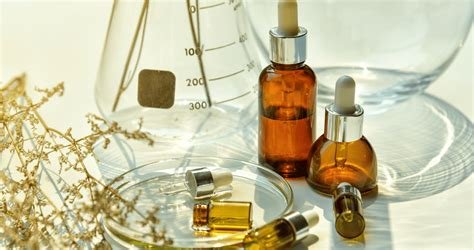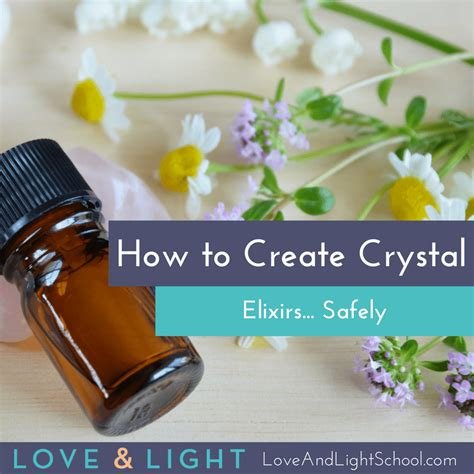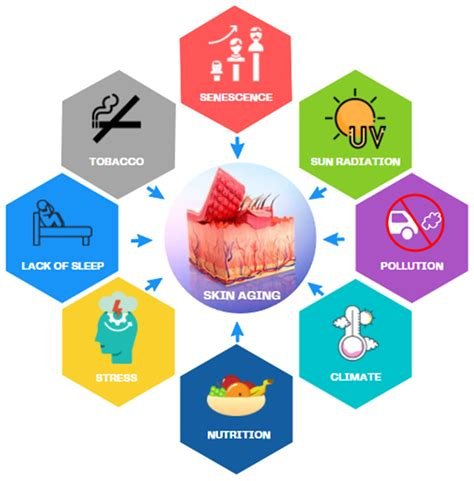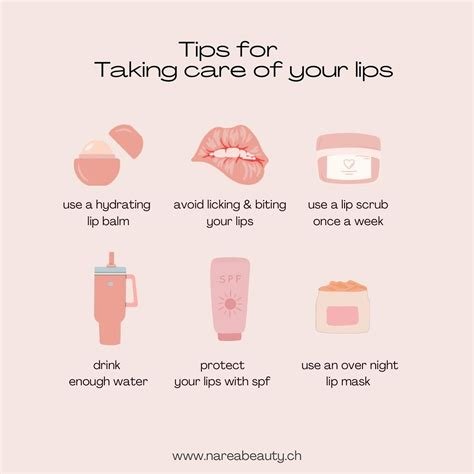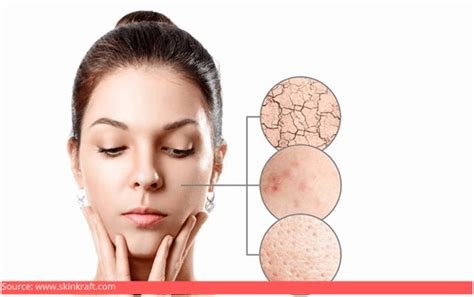This article explores the debate between natural ingredients and synthetic components in skincare products, emphasizing the importance of natural ingredients for healthier skin. It begins by defining natural ingredients and explaining how they differ from synthetic ones. The benefits of opting for natural ingredients include reduced irritation and enhanced skin compatibility, while potential drawbacks of synthetic ingredients may involve harmful effects and skin sensitivities. The article also provides guidance on how to effectively incorporate natural ingredients into your skincare routine, highlighting popular brands that use these elements. Expert opinions underscore the efficacy of natural ingredients, helping readers make informed decisions. Finally, tips for choosing the right products with natural ingredients are shared, encouraging consumers to prioritize skin health by selecting wisely. Ultimately, this comprehensive guide aims to empower readers to make informed choices that align with their skincare goals.
Understanding Natural Ingredients In Skincare Products
Many consumers are progressively leaning towards products that boast natural ingredients. This shift stems from a growing awareness of the potential harms that synthetic chemicals in skincare can cause. Natural ingredients are typically derived from plants, minerals, or other earthly sources, emphasizing harmony with nature. Integrating these ingredients into skincare regimens can cater to various skin types and concerns while minimizing adverse reactions.
When scrutinizing the labels on skincare products, it’s essential to recognize that not all natural ingredients are created equal. While some may deliver superior healing and nourishing properties, others could lead to irritation or allergies. The processing of these natural compounds also plays a vital role; overly processed items may lose their beneficial attributes. Thus, understanding the source and quality of these ingredients becomes imperative.
- Popular Natural Ingredients
- Aloe Vera
- Shea Butter
- Coconut Oil
- Jojoba Oil
- Tea Tree Oil
- Honey
- Green Tea Extract
The benefits of choosing natural ingredients extend beyond skin health. When brands prioritize these components, they often adopt eco-friendly practices, contributing to sustainability. Consumers can feel good about their purchases, knowing they’re supporting both their skin and the planet. Furthermore, many of these ingredients offer therapeutic effects, such as reducing inflammation or providing hydration, making them suitable for a diverse range of users.
Natural ingredients often provide a more holistic approach to skincare, supporting the skin’s natural functions.
In conclusion, the rise of natural ingredients in skincare signifies a broader trend towards conscious consumerism. It encourages individuals to make informed choices by encouraging them to research products, assess ingredient quality, and consider both efficacy and environmental impact. By understanding the essential components of skincare, consumers can effectively navigate the vast array of options available and select products that truly benefit their skin health.
Key Differences Between Natural And Synthetic Ingredients
When it comes to choosing products for skincare or other uses, the decision between natural and synthetic ingredients is crucial. Natural Ingredients are often heralded for their perceived safety and effectiveness, while synthetic ingredients can be appreciated for their consistency and stability. Understanding the key differences can significantly influence your choices and ultimately benefit your skin and overall wellbeing.
One primary distinction lies in the source and processing of the ingredients. Natural Ingredients are derived from plants, minerals, and other organic materials, whereas synthetic ingredients are formulated in laboratories through chemical processes. This means that natural ingredients often retain more of their original properties compared to their synthetic counterparts, which might be modified to enhance performance.
Differences to Consider
- Source: Natural ingredients come from nature, while synthetic ones are man-made.
- Processing: Natural ingredients are less processed than synthetic ingredients.
- Effectiveness: Natural ingredients can offer varying results based on their source.
- Skin Sensitivity: Natural ingredients may be gentler on sensitive skin.
- Stability: Synthetics typically provide more consistent results over time.
- Environmental Impact: Natural sourcing often has a smaller carbon footprint.
- Cost: Natural ingredients can sometimes be more expensive to source.
Both types of ingredients have their merits and drawbacks. While Natural Ingredients are often favored for their integrity and environmental benefits, they can also come with variability in quality and efficacy. Conversely, synthetic ingredients provide reliability in performance but may raise concerns regarding skin compatibility and long-term health effects. It’s essential to weigh these factors according to your personal preferences and skin needs to make an informed choice.
Ultimately, the best choice may vary for each individual, depending on skin type and personal philosophy on beauty and wellness.
Benefits Of Choosing Natural Ingredients Over Synthetic Ones
When it comes to skincare and personal care products, the choice between synthetic and natural ingredients can significantly affect not only the effectiveness of a product but also its overall impact on skin health. By opting for products with natural ingredients, consumers are increasingly looking for solutions that deliver benefits without the potential harmful side effects often associated with synthetic alternatives. Natural ingredients, derived from plants or minerals, tend to be gentler on the skin and are often better received by those with sensitive dermis.
One of the key benefits of choosing natural ingredients is their inherent compatibility with the body’s natural physiology. Ingredients such as aloe vera, coconut oil, and shea butter are rich in vitamins and nutrients, promoting skin health and providing hydration. As a result, products formulated with these natural ingredients can help to soothe irritation, reduce inflammation, and enhance overall skin texture without the added risk of irritation that many synthetic compounds often bring.
Advantages Of Natural Ingredients
- Better skin compatibility
- Reduced risk of irritation
- Rich in vitamins and antioxidants
- Lower environmental impact
- Often cruelty-free
- Supports sustainable practices
Moreover, embracing natural ingredients often aligns with a more eco-conscious lifestyle. Many natural products are formulated in sustainable ways, minimizing the negative effects on the environment during production and disposal. Additionally, these ingredients typically pose less harm to aquatic life and ecosystems compared to their synthetic counterparts, which may contain toxic substances that contribute to pollution. In this context, choosing natural ingredients not only benefits personal health but also supports global sustainability efforts.
Potential Drawbacks Of Synthetic Ingredients In Products
While synthetic ingredients can offer certain advantages, such as cost-effectiveness and consistency, they come with potential drawbacks that consumers should be aware of. One important consideration is that synthetic components may trigger skin sensitivities or allergic reactions in some individuals. Many people are turning to products with natural ingredients as a result of these adverse effects.
Often, synthetic ingredients can also disrupt the skin’s natural barrier function. This disruption can lead to increased dryness, irritation, or breakouts, making it essential to evaluate the claims made by products that contain such components. Furthermore, synthetic formulations can sometimes contain harmful preservatives, fragrances, or fillers that do not benefit the skin.
When considering products with synthetic ingredients, consumers should be aware of the following common concerns:
- Potential for skin irritation or allergic reactions
- Disruption of the skin’s natural barrier function
- Presence of harmful preservatives
- Use of synthetic fragrances, which can cause sensitivities
- Lack of transparency in ingredient sourcing
- Environmental impact of synthetic manufacturing processes
All these factors contribute to a growing preference for products with natural ingredients, which are often perceived as safer and more beneficial for the skin. It’s crucial for consumers to educate themselves about the formulations in their skincare products and weigh the pros and cons as they seek to enhance their beauty regimen.
How To Effectively Incorporate Natural Ingredients In Your Routine
Integrating natural ingredients into your skincare routine can feel overwhelming at first, but with a structured approach, it becomes a rewarding journey towards healthier skin. First, it’s essential to understand the specific needs of your skin. Assessing your skin type—whether oily, dry, or combination—can help you identify which natural ingredients will be most beneficial for you. This tailored approach ensures you select products that address your concerns without causing irritation.
Steps To Follow
- Identify your skin type and specific concerns.
- Research natural ingredients that address your needs.
- Start with one or two new products at a time.
- Patch test any new product to check for reactions.
- Monitor your skin’s response over several weeks.
- Gradually add more products as your skin adjusts.
- Stay informed about seasonal changes, which may affect your skin’s needs.
As you embark on this path, consider the processing methods of the products you choose. Whole-food based formulas often retain higher levels of natural ingredients and nutrients as opposed to heavily processed alternatives. When reading labels, focus on products that list these ingredients prominently, as they often deliver better results for skin health.
“Using natural ingredients is not just about what’s in your products, but also about being aware of how those ingredients interact with your skin over time.”
Finally, remember that patience is key when incorporating natural ingredients into your routine. Unlike synthetic ingredients that may show instant results, natural alternatives often require consistent use for visible improvement. Keep a skincare diary to document changes, and don’t hesitate to consult with a dermatologist or skincare expert as you make the transition. With careful consideration, your skin can thrive with the gentle touch of nature.
Real-Life Examples Of Natural Ingredients In Popular Brands
When exploring the realm of skincare, it’s essential to recognize the influence of natural ingredients on effective formulations. Many popular brands have successfully incorporated these elements into their products, allowing consumers to experience the benefits first-hand. By focusing on these examples, we can better understand how natural ingredients contribute to quality skincare while overshadowing the need for synthetic alternatives.
- Tatcha – Known for its use of Japanese botanicals like green tea and rice, which help nourish and revitalize the skin.
- Herbivore Botanicals – Emphasizes cruelty-free skincare with ingredients such as rosehip oil and clay that are beneficial for various skin types.
- Origins – Utilizes natural ingredients like ginseng and aloe vera to promote healthy skin and combat signs of aging.
- Juice Beauty – Focuses on organic ingredients, integrating fruit juices and plant-derived compounds in their formulations.
- Weleda – Uses biodynamic farming practices to source ingredients like calendula and chamomile, which soothe and care for the skin.
These brands illustrate the trend of harnessing the power of natural ingredients rather than relying on synthetic alternatives. By opting for products enriched with these components, consumers can experience enhanced efficacy and fewer potential side effects. This shift towards a more holistic approach is gaining momentum as awareness of sustainable practices grows within the beauty industry.
“Natural ingredients prove to be not only beneficial for the skin but also aligned with environmentally friendly practices, promoting overall skin health.”
As we delve deeper, let us examine specific case studies of brands who have excelled in using natural ingredients effectively.
Case Study 1
Tatcha stands out as an exemplary brand that prioritizes natural ingredients. The incorporation of traditional Japanese ingredients into their skincare regimen demonstrates a compelling commitment to purity and efficacy. For instance, their products often include a unique blend of plant extracts designed to enhance hydration and promote a healthy complexion.
Case Study 2
Another brand, Juice Beauty, showcases how natural ingredients can transform skincare. By focusing on organic farm-sourced materials, Juice Beauty’s products often include fruit enzymes and antioxidants that provide natural exfoliation and rejuvenation. The brand emphasizes the idea that what you apply to your skin matters, opting for formulations that are as beneficial for your skin as they are for the planet.
Expert Opinions On The Efficiency Of Natural Ingredients
As consumers become increasingly aware of the ingredients in their skincare products, many are turning to natural ingredients as a preferred choice. Experts agree that the effectiveness of these ingredients can vary, but they often highlight their potential to provide skin benefits without the harsh side effects associated with synthetic alternatives. While opinions may differ, the consensus is that understanding the origins and properties of natural ingredients leads to better skincare choices.
Numerous professionals in the skincare industry have shared insights on the value of incorporating natural ingredients into beauty routines. These insights not only reflect current trends but also provide evidence-based approaches to skincare. The focus largely revolves around how these ingredients can complement the skin’s natural processes, leading to healthier and more radiant skin.
Insights From Professionals
- Natural ingredients often contain antioxidants that combat oxidative stress.
- Many natural ingredients are less likely to cause irritation compared to synthetics.
- Professionals note that plant-derived compounds can be highly effective in treating various skin concerns.
- Organic ingredients tend to support skin barrier function through their nutrient-rich profiles.
- Natural extracts can enhance moisture retention, promoting a more hydrated complexion.
- Several experts advocate for natural ingredients due to their minimal environmental impact.
- Research supports the use of certain botanical ingredients for specific skin issues based on traditional usage.
Furthermore, experts suggest that while many natural ingredients are beneficial, consumers should remain prudent in their selections. Some may still cause adverse reactions; thus, patch testing is recommended. Additionally, it is important to source these ingredients from reputable brands that prioritize quality and sustainability, ensuring that you are not only caring for your skin but also for the planet.
Ultimately, professionals agree that an informed approach to skincare—whether using natural ingredients or synthetic ones—leads to the best outcomes. By leveraging the power of nature and staying educated on ingredient efficacy, individuals can make choices that foster long-term skin health and well-being.
Tips For Choosing The Right Products With Natural Ingredients
When it comes to selecting skincare products, opting for those with natural ingredients can significantly enhance your skin health. However, with a plethora of options available, knowing how to choose the right products can be a daunting task. It is essential to understand what makes an ingredient truly natural and how these ingredients can benefit your skin without causing adverse reactions. By being informed, you can make smarter decisions that align with your skincare goals.
One of the first steps in selecting products with natural ingredients is to carefully examine the ingredient list. Natural products should ideally have a short list of recognizable, plant-based components. Ingredients such as aloe vera, coconut oil, and shea butter not only nourish the skin but are also less likely to cause irritation. Always remember that just because a product states it is “natural,” it doesn’t guarantee that it is free from harmful chemicals or synthetic additives.
- Helpful Tips
- Check for certifications, such as “USDA Organic” or “Cruelty-Free.”
- Research brands that prioritize sustainable sourcing and ethical practices.
- Look for products with fewer than ten ingredients whenever possible.
- Read customer reviews to gauge real-life efficacy and any potential side effects.
- Avoid products with fragrances or preservatives that can irritate sensitive skin.
- Consider the product’s pH level, as this can impact how natural ingredients function on your skin.
- Perform a patch test before fully incorporating a new product into your routine.
In your quest for products with natural ingredients, it’s also vital to consult resources like dermatologists or skincare experts who can guide you based on your specific skin type and concerns. Professional recommendations can help you avoid trial and error, ensuring you choose products that offer the benefits you seek while minimizing risks. Furthermore, taking the time to educate yourself on the various ingredient benefits can empower you to make informed choices moving forward.
Overall, selecting skincare products with natural ingredients is a proactive step toward healthier skin. By focusing on transparency, performing diligent research, and asking for expert advice, you can better navigate the skincare market. Ultimately, finding the right balance of effective and gentle ingredients will allow you to enjoy the full benefits of natural skincare.
Conclusion: Making Informed Choices For Your Skin Health
In the ever-evolving world of skincare, understanding the distinction between natural and synthetic ingredients is paramount. Choosing products that contain natural ingredients can significantly benefit your skin health, as they are often more compatible with the skin’s biological makeup and can be less irritating. However, informed choices require a deep dive into what specific ingredients offer, their source, and how they interact with your skin. Emphasizing knowledge over marketing hype ensures you select products that truly deliver on their promises.
While natural ingredients generally offer numerous benefits, it’s essential to also acknowledge that not all natural substances are suitable for everyone. Individual skin types and sensitivities play a crucial role in how your skin reacts to various ingredients. Hence, it’s vital to do thorough research before integrating a new product into your skincare routine. Ultimately, personal experience and awareness will guide you toward the best choices for your skin.
Here are some Actionable Takeaways to consider when choosing skincare products:
- Research the full ingredient list to understand what each component does.
- Start with individual natural ingredients to identify what works best for your skin type.
- Consult with a dermatologist if you have specific skin conditions or concerns.
- Pay attention to how your skin reacts after using new products.
- Look for certifications that verify the authenticity and purity of natural ingredients.
- Stay informed about the latest research and trends in skincare.
- Be cautious of marketing claims; always verify ingredient efficacy.
The skincare industry is filled with choices, and aligning your personal values with product selection can result in a fulfilling journey toward better skin health. As you navigate between natural ingredients and synthetic options, remember that the ultimate goal is to choose products that enhance your well-being and cater to your skin’s specific needs. Building a personalized skincare regimen that embraces the strengths of natural ingredients can lead to a radiant complexion and overall skin vitality.
